When someone talks about Hong Kong, we would most likely associate it with the breathtaking skyscrapers, night scenery, the bustling city life as well as its diverse people and culture. But this tiny city tucked away on the coast of southern China, also holds something equally as breathtaking and diverse. You guessed it, it’s a marine ecosystem, teeming along its winding coastline and the 263 islands in its territory.
Other than 1000 plus species of marine fish and countless species of marine invertebrates, Hong Kong actually has more than 80 confirmed species of stony corals and tens of unique octocorals, black corals, and Zoanthids. Hong Kong is an overpopulated city located right next to the Pearl River Delta, essentially a giant estuary. This results in unstable salinity, and extremely murky water especially in the west. On top of that, the winter in Hong Kong can also be very cold, sometimes the water temperature can be as low as 12-13°C/53-55F, and during the summer months, the water temperature can rise up to about 30°C/86F.
That’s crazy, but explains why Hong Kong does not have any “coral reefs” as it cannot fully support corals to grow to such a scale. Instead, there are coral communities scattered throughout the east, creating quite interesting habitats. Probably one of the most amazing facts is that with the city being so small, coral habitats and our homes are so close to each other, and often times a short bus ride could bring us to them. In other words, these amazing animals are literally right under our noses. Now let’s talk about corals!
Hong Kong’s Home Grown Acros
The Agriculture, Fisheries, and Conservation Department (AFCD), started a detailed study to investigate Hong Kong’s coral diversity in the early 2000s. It concluded that Hong Kong has over 80 confirmed species of stony corals, five of which are from the genus Acropora. To a reefer like you and me, it is really surprising to know that despite Hong Kong having such harsh conditions, corals especially Acros which have a reputation to be the hardest corals to keep, managed to more or less thrive here. Here are the five Acro species in Hong Kong.
Acropora digitifera
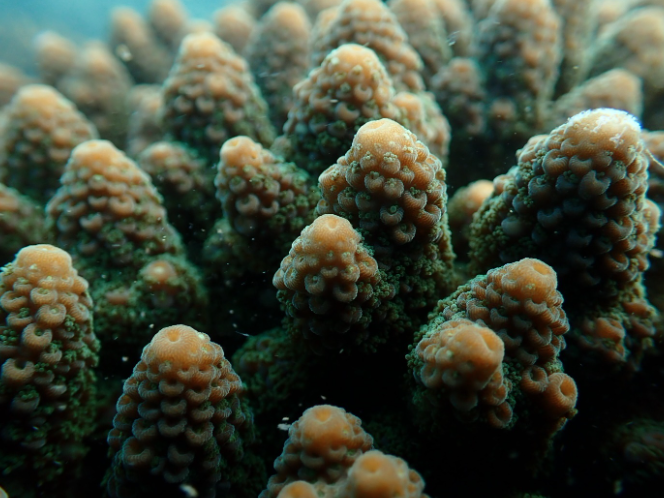
This species of Acropora can be found at quite shallow and sheltered parts about 2m/6′ deep, where they form large colonies that have a digitate growth pattern. In Hong Kong, A. digitifera colonies generally come in 3-4 colors, the greenish one in the photos, a reddish brown one, and one with a dark bluish hue. All of those have axial corallites and growth tips ranging from white to orange. In reefer instincts, these really reminded me of high-light demanding Acro species in the trade like A. spathulata.
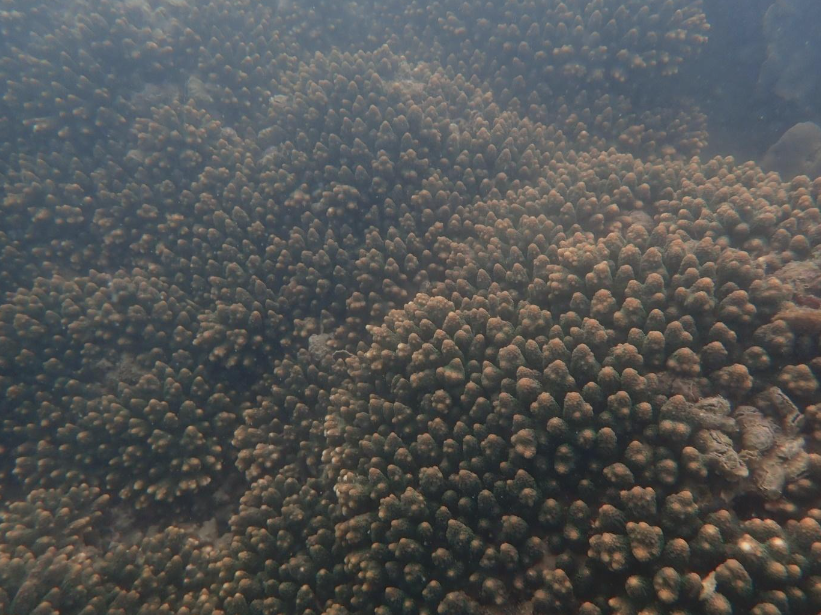
In some places, A. digitifera can appear in the form of tiny colonies with only a handful of branches lying right on the sand, but there are some areas that have communities with absolutely huge colonies closely packed together. The above photo is about 1/12th of the entire “community” of a few large colonies of the same species. In the wild Acros provide food and shelter to a lot of marine species. In the summer months, you can easily find butterflyfish, most commonly the Mirrored butterflyfish (Chaetodon speculum) of all sizes grazing about, as well as juveniles of the Reticulated damselfish (Dascyllus reticulatus) and even coral gobies, hiding amongst the branches. Because this species resembles Acropora tumida, A. digitifera was mis-ID’d by older studies in Hong Kong as A. tumida. However, A. digitifera has a more digitate growth pattern and has tapered branches, different from A. tumida.
Acropora solitaryensis
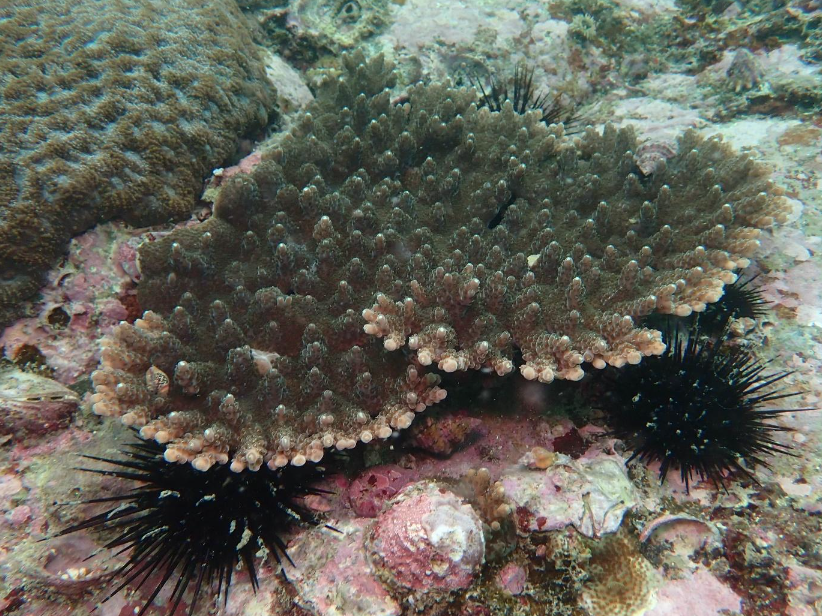
One of the more unique species of Acropora found in Hong Kong, and easily extinguished from the other four, because A.solitaryensis has a distinct plating growth pattern, sometimes if you look at it afar you would mistake it as a Montipora. Some colonies look so flat the basal branches fused with each other, and the branches can be so short that it sometimes only contains “buds” with the axial corallite and a few radial corallites, literally forming a table. In a few instances when I go exploring rocky reefs, there are some A. solitaryensis colonies that are almost entirely encrusting and only have a few barely noticeable axial corallites around the center.
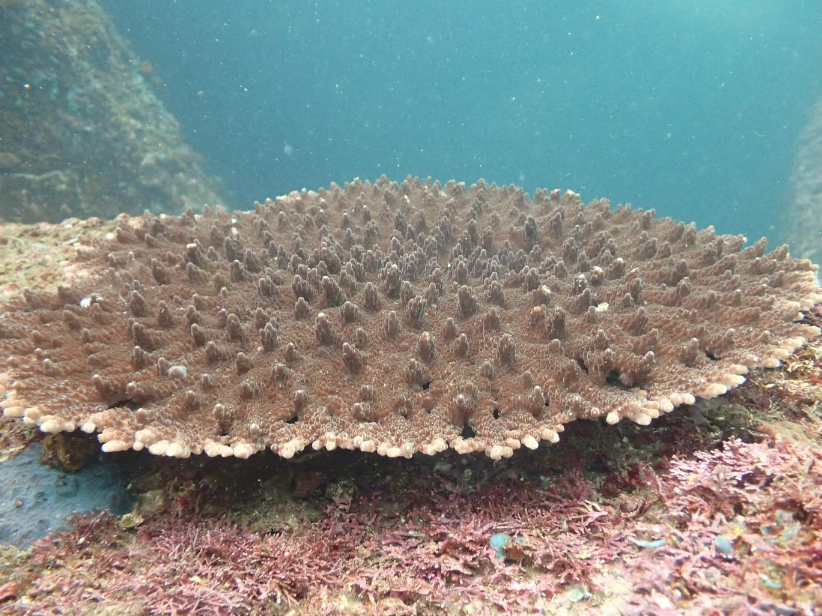
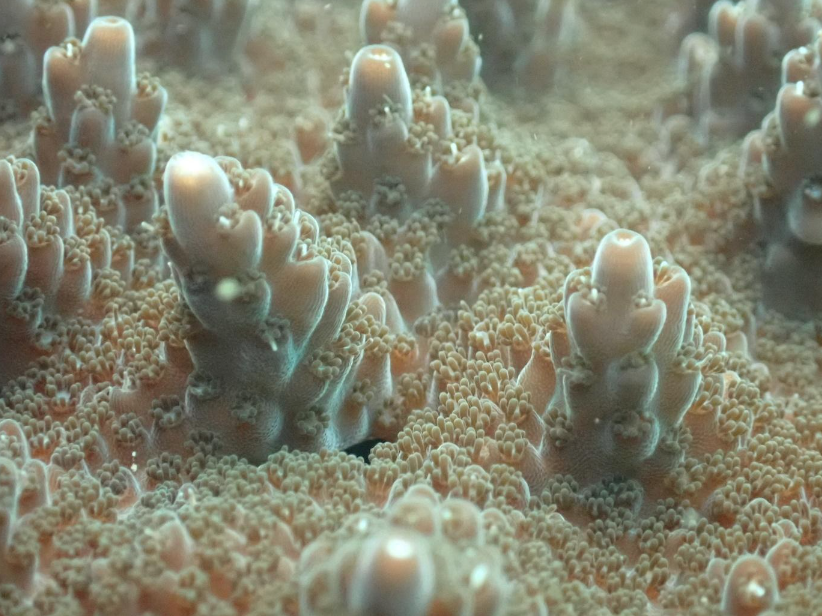
No wonder some would refer to these as “Table coral”. Instead of sandy and sheltered coral communities, they are generally restricted to the “open” water off outlying islands, on exposed boulders and submerged dam blocks that have a lot of flow, sometimes so strong that divers have to take hold of the rocks to avoid being flushed away by the current. Suffice to say these corals really need a ton of flow that such environments would be very difficult to replicate in our home aquariums.
Being rare in coral communities unlike the others, A. solitaryensis in Hong Kong mostly appears in small to medium colonies, scattered around rocky reefs. As far as colors go, they always have the same brownish and grey tone with whitish axial corallites and growth tips, and polyps share the same color with the coenosarc. It always provokes us to think about what they would look like under reef aquarium lighting. For some reason, guard crabs are usually observed living in these colonies. The Chinese name of this species translates as “lonely” or “individually”.
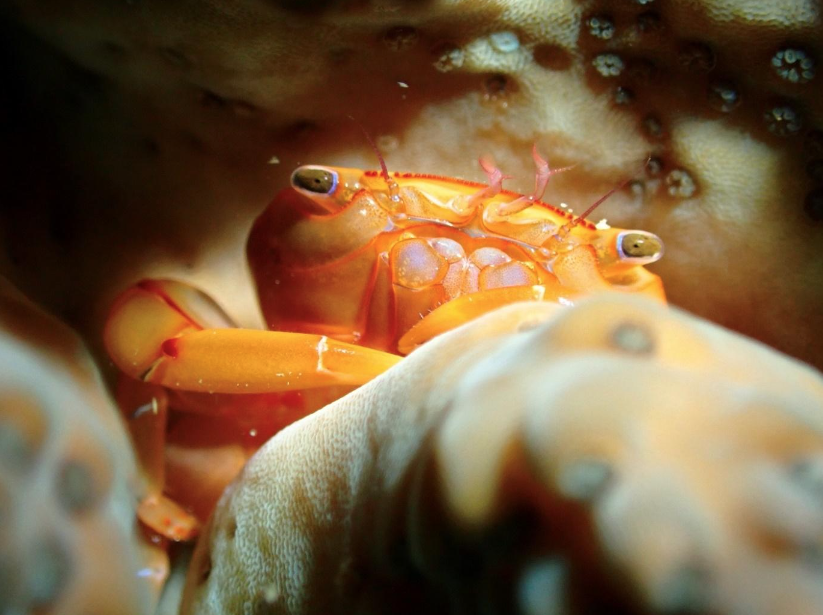
Acropora pruinosa
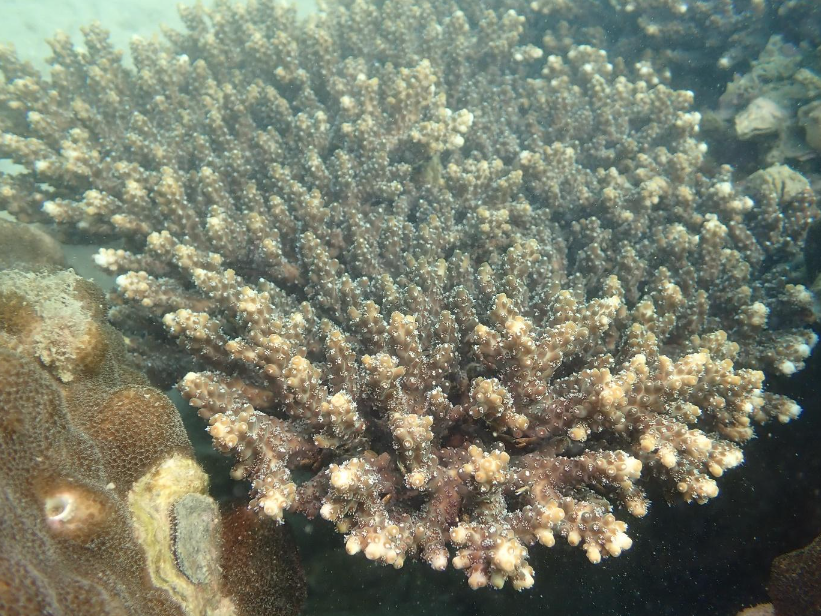
In Chinese, the name of this species translates as “snow staghorn coral”, presumably referring to its rather iconic white polyps that stood out from the others. In Hong Kong, there is generally a brown and a green color pattern, and all of those have white polyps and yellowish axial corallites. Compared to other species in Hong Kong, A. pruinosa generally have thinner branches with secondary branches branching out of the thicker ones. Interestingly, this species can come in a variety of growth patterns depending on the environment the colony is in. Like this one, some colonies may grow in a tree-like arborescent growth pattern and in some instances they can be tabling, but I have yet to find one.
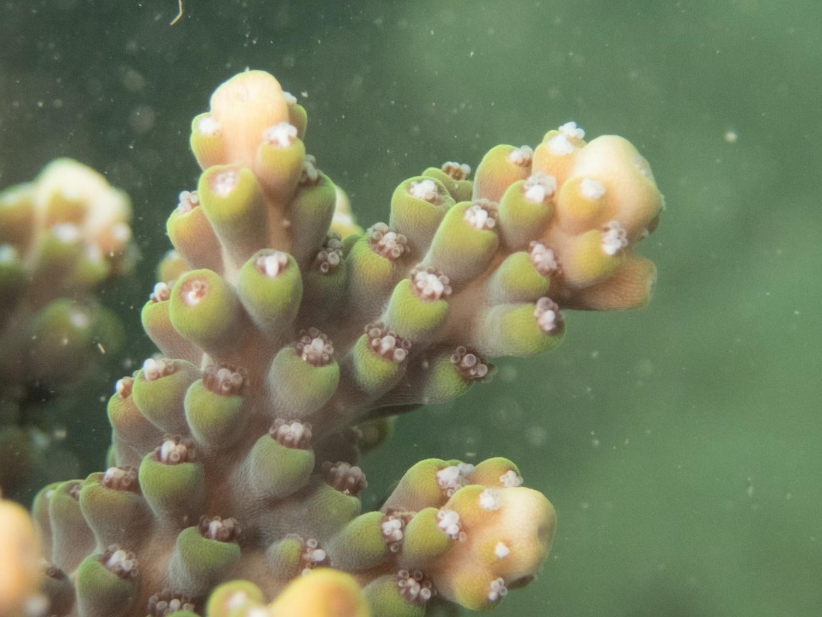
Established colonies of Acropora pruinosa can be found in shallow sheltered reefs mostly in northeastern Hong Kong, note that the colony photo isn’t taken with only a tiny video light because there is no such need. This colony is at about 2m/6′ down and is getting plenty of sunlight and flow during the day. It goes to reflect the sheer amount of light needed to grow corals like these. In my opinion this species would be a stunning piece in an SPS-dominated reef tank because of its white polyps, I wonder what color would the polyps be if put under reef aquarium lighting.
Acropora tumida
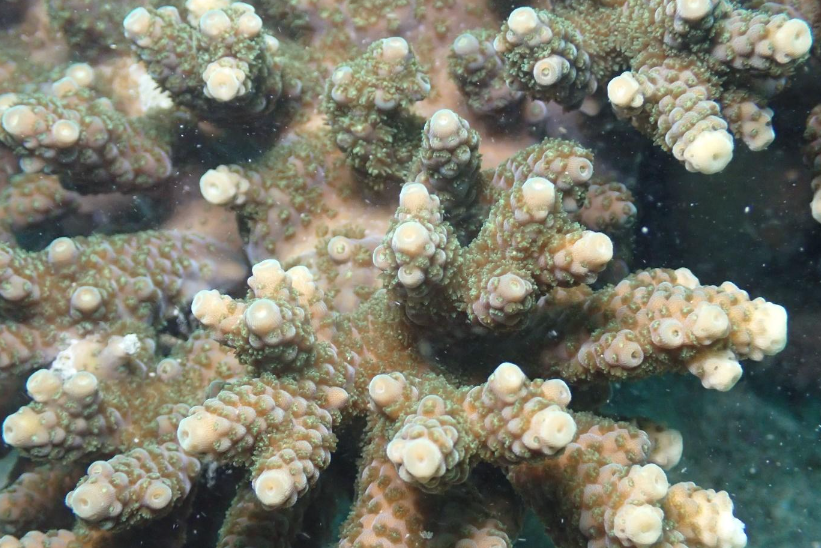
A rather uncommon species of Acropora here in Hong Kong, they do occur in shallow coral communities like others do, however whenever I see one, they seem to be either in small to medium-sized loose colonies scattered throughout a sand flat, or single colonies with no other of it’s kind in sight in the entire area. A. tumida may appear to have a digitate growth pattern but when looked at carefully they actually have a fascinating arborescent to caespito-corymbose growth pattern. Branches often have secondary branches.
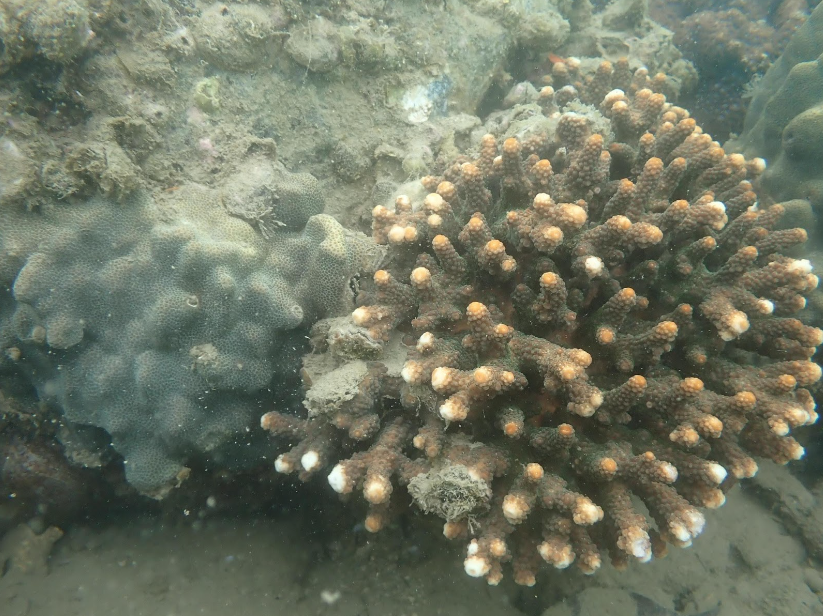
This species seems to have a similar color to A. digitifera, taking up the typical brown and dark green coloration, with the same white to yellow axial corallites. Despite its rather boring look under sunlight, the type locality of this species is actually here in Hong Kong.
Acropora glauca
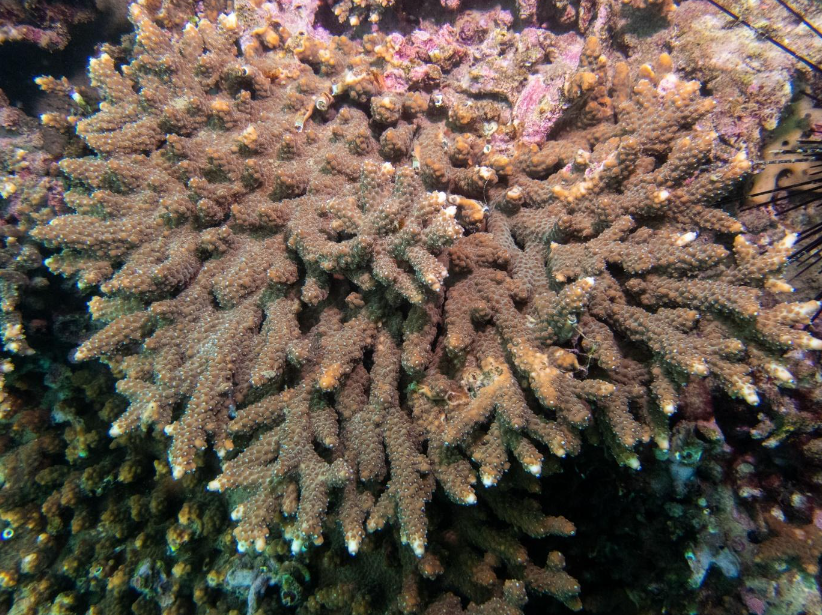
I have yet to see this species in person but it sure looks odd. In Hong Kong. A. glauca mainly has two different growth patterns, and they look so different that they can look like two completely separate species to the untrained eye. Probably the more common ones are the tabling ones that have longer, fused branches and smaller axial corallites that grow almost horizontally, as well as another one with a corymbose growth pattern, short branches but unusually large axial corallites.
Those growth patterns and “morphologies” depend on which part of the habitat the coral is living in, and according to sources the former one tends to be found in deeper coral communities that are more exposed, presumably in the more rocky areas instead of sandy areas. Similarly to A.pruinosa, this species has white polyps. Is it possible that under reef tank lighting, would Hong Kong’s A. glauca be something resembling the absolutely stunning Solar Flare Acropora glauca from Australia?
Difficulties When Finding Information
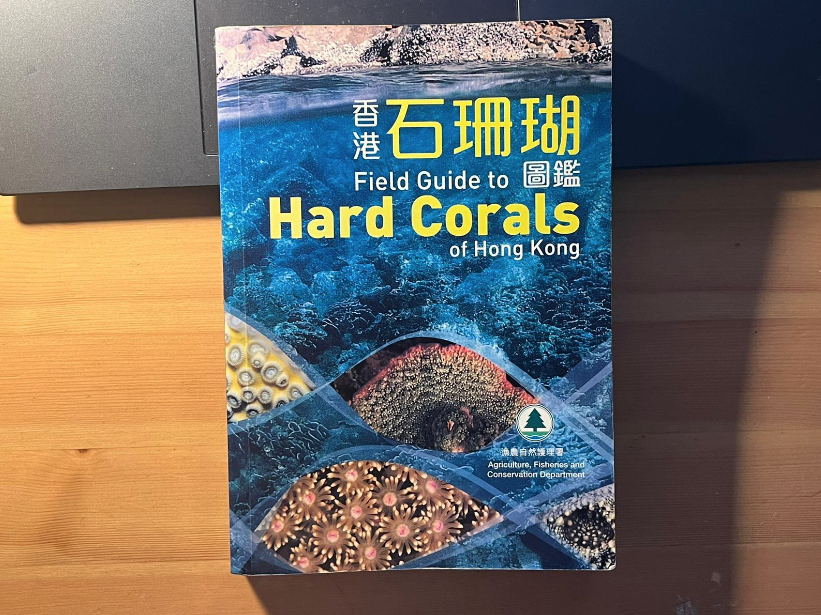
During research for this article, I used two main resources. As mentioned at the start of this article, local authorities teamed up with local universities and a bunch of coral scientists and launched a detailed study on Hong Kong’s stony coral in the early 2000s. After which a book was published later in 2005. “Field Guide to Hard Corals of Hong Kong”, a picture guide on Hong Kong’s stony coral species. Which I managed to get my hands on last year and used it to do research for this article. The other source I am using is the Hong Kong Biodiversity Information Hub (HKBIH), in its coral page there is a species database containing all of Hong Kong’s stony coral species and relatively detailed information on them.
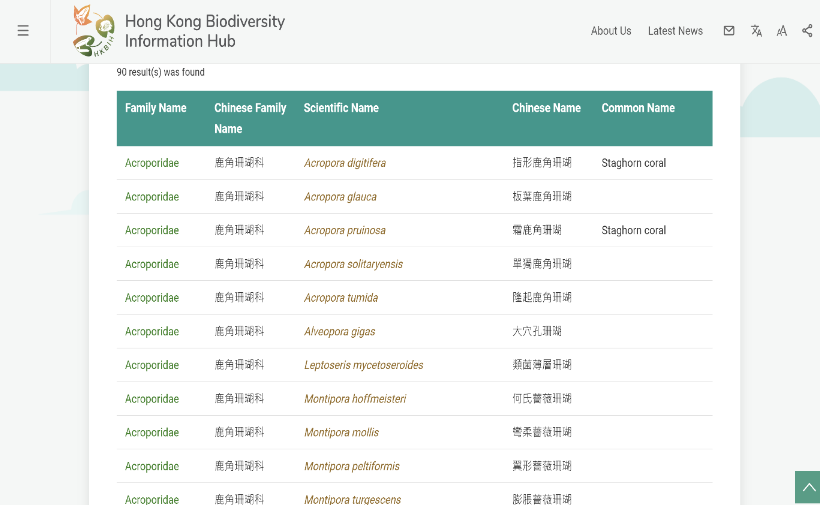
Given the nature of coral taxonomy, the phrase “everything is subject to change” is an understatement. Not to place the blame on anyone, but the data we have available are from the early to mid-2000s era, and from today there is almost a 20-year-old gap. It is entirely possible that a lot about these corals might have changed over the years. And being just a day-to-day reefer, at best a passionate marine science undergraduate, with limited resources, these are by far the most reliable and accurate information that I could get my hands on.
As a HongKonger and a reefer, it is still very mind blowing to know that despite such unforgiving marine environments, Acropora, a coral known to be extremely needy and notoriously sensitive to change, can still find its way to live and thrive literally right under our noses. It is just truly amazing. Further reminding us that it is worth exploring these amazing creatures, albeit with respect and responsibly. Happy reefing folks~
About the author
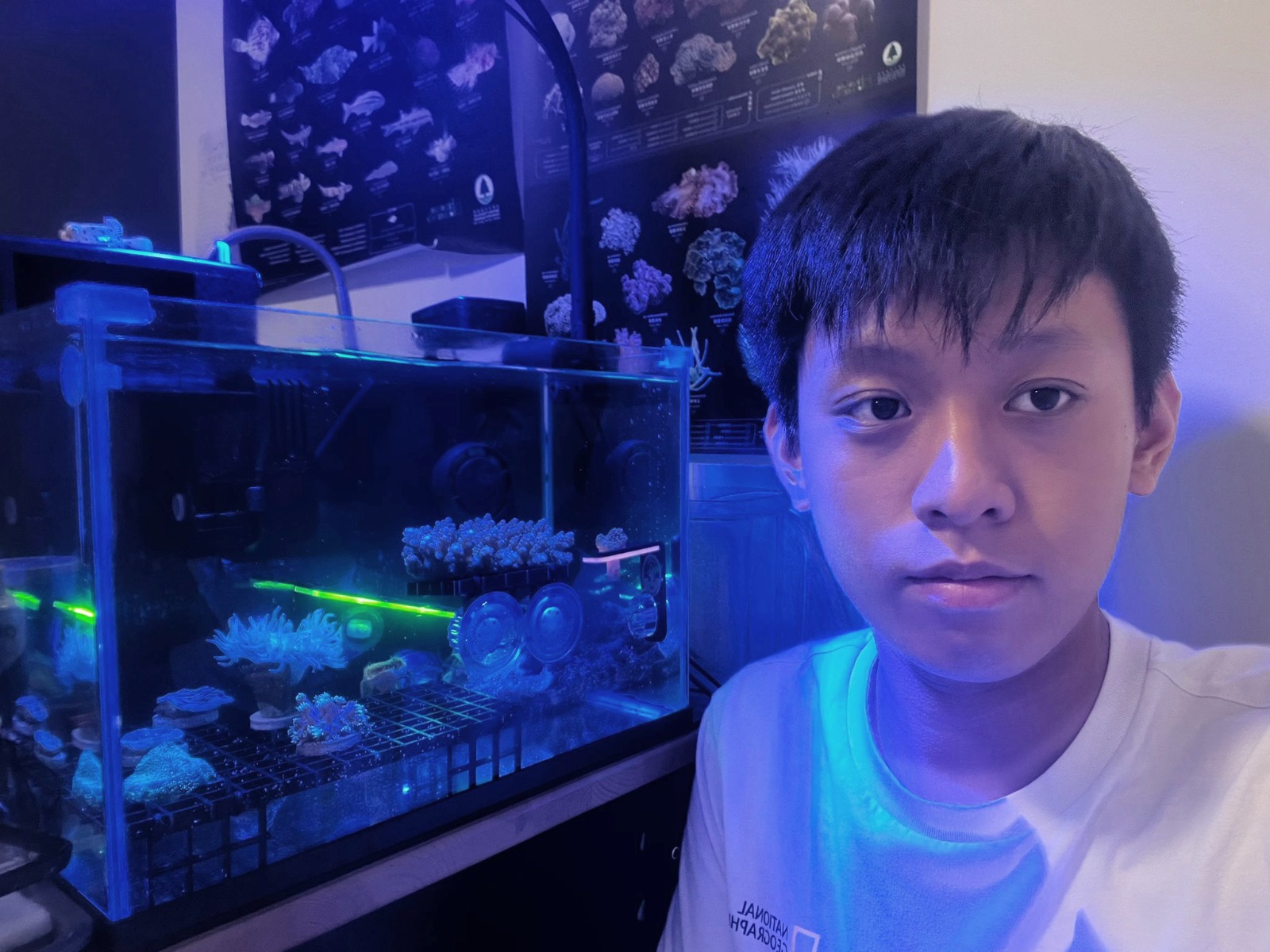
Chelmon Leung is a reef aquarium hobbyist and recreational diver based in Hong Kong and is currently studying in Australia for a Marine Science degree. He started moving from freshwater aquariums to saltwater and reef aquariums in his late secondary school years and is now an advanced beginner to intermediate-level hobbyist. He also started scuba diving in 2023 because of his interest in marine life, specifically the marine ecosystem of his hometown. He has a morbid interest in oddball corals, weird fish, and other lesser-known aquarium livestock. He has an Instagram page dedicated to these topics. He has undying passion and extreme optimism when it comes to exploring his favorite topics.


